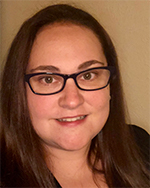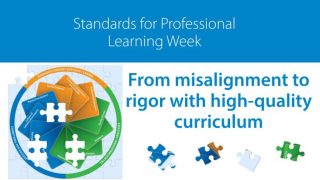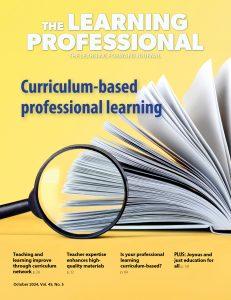Every year, there is monumental excitement around the start of the school year. The energy is electric for students, teachers, and coaches alike. As coaches, we feed off this energy and it propels us forward. But figuring out how to support all teachers can be a big task. To be successful, coaches have to be intentional in planning where they are headed and charting the course. As coaching expert Elena Aguilar says in Onward (Aguilar, 2018), “Intention setting is a practice that helps you form new stories…It gives direction. It also primes your mind to make choices that will allow it to fulfill your intention.”
How do you commit to setting your vision and making sure it can become part of your reality? How do you plan for revisiting and revising that vision over time? Here are three strategies you can use to create a clear vision and revise it as needs evolve.
Coaches have to be intentional in planning where they are headed. Here are three strategies coaches can use to create a clear vision. #EduCoach @MissGroskin @vhchristensen Share on X1. Start a vision board
Vision boards are a way to illustrate or document your goals to make them concrete for yourself and others. They can provide clarity and focus, help bring a goal to life, motivate and activate thinking, and offer the opportunity for reflection. Vision boards are personalized; there is no one right way to create one. The focus is on the process, not on a polished product.
To start out your vision boarding session, first brainstorm some goals. You will want to prioritize them and not choose too many. Cut out and gather words, phrases, and images that relate to your goals. Now lay out and assemble your board. You can use poster board or large pieces of paper with magazine clippings and writing and drawing tools. Or, you go the digital route with a program like Google Slides, Jamboard, Keynote, or PicCollage.
Find a place to hang your vision board or, if it’s digital, a way to revisit it. Share it with colleagues and plan for how you will consult it regularly to inform your work.
2. Create a journal
Keeping a journal offers many benefits. For example, it can help boost mindfulness, memory, and communication skills. According to The New York Times article “What’s All This About Journaling?” (Phelan, 2018), studies have also found that writing in a journal can lead to better sleep, a stronger immune system, more self-confidence, and even a higher I.Q. A journal is also a good place to chart your vision for the year. You can treat yourself to a special journal or even use a note-taking app on your iPad or computer such as Notability or Notes.
Starting a journal can feel intimidating, but it doesn’t have to be. Prompts like these can get you going:
- Why did you choose to go into instructional coaching?
- What do you want to achieve personally and with your colleagues this year?
- What are your values and how do they align with your work?
- What are your strengths and how can you leverage them in this work?
Your writing doesn’t need to be well-organized, because your journal is not for anyone else to read; it’s for you to brainstorm and reflect. Once you’ve gotten started, you can reflect on the common threads you are seeing in your writing and begin to craft your mission and vision statements.
However, sometimes journaling just does not capture the true essence of the experience, therefore video reflection is another route to take. Not everything can always be written out, but it can be filmed on tape to review later.
Capturing video around your goals, coaching sessions, and reflections in one place to review over time can be just as powerful to check in on your vision, check your progress, and stay the course. In our district, we use Edthena to track our coaching progression and work – as well as our teachers’ growth – throughout the year. The platform leverages classroom video to help us engage in reflection, and provides an excellent way to see our growth towards goals. This helps keep us inspired throughout the year and is a fun, best-practice way to document one’s career journey.
3. Sketchnote your vision
Integrating sketching into notetaking or planning can help you create a mental image and retain ideas over extended periods of time. That’s helpful for coaches as we are setting our course for the year and mapping out a route. If you are able to articulate your vision in a mix of drawing and text, then you truly own that vision. Many people shy away from this visual notetaking because they don’t feel they are artists. But a sketchnote does not need to be a work of art; it is simply text mixed with doodles or patterns. What’s important is the process of creating it and then posting it where you will see it often. This may be in your plan book, at your desk, or even in the bathroom mirror so that you can consistently stay connected with your purpose.
For more information on how to create sketchnotes and why they are helpful notes, see the recent article, “Drawn to learning,” from The Learning Professional (Stefanik-Miller, 2021).
Find what works for you
How you choose to craft your vision for the year is up to you; the important thing is that you find a process that works for you and your colleagues. The main goal is to set aside time to think about what you want your year to look like and what things are important to you as an instructional coach. If you are clear on your vision then it will set you up on the trajectory for success.
Here are some coaching questions to start your vision work:
- How will my work with educators support my vision for the year?
- What capacities and skills do I have to make changes in the world for educators today?
- How can I have a positive impact on educators’ practice?
- How will I know my impact?
References:
Aguilar, E. (2018). Onward: Cultivating emotional resilience in educators. Jossey-Bass.
Phelan, H. (2018, October 25) What’s All This About Journaling? The New York Times. https://www.nytimes.com/2018/10/25/style/journaling-benefits.html
Stefanik-Miller, C. (2021). Drawn to learning. The Learning Professional, 42(1), 76. https://lfstage.xyz/journal/looking-ahead/drawn-to-learning/








